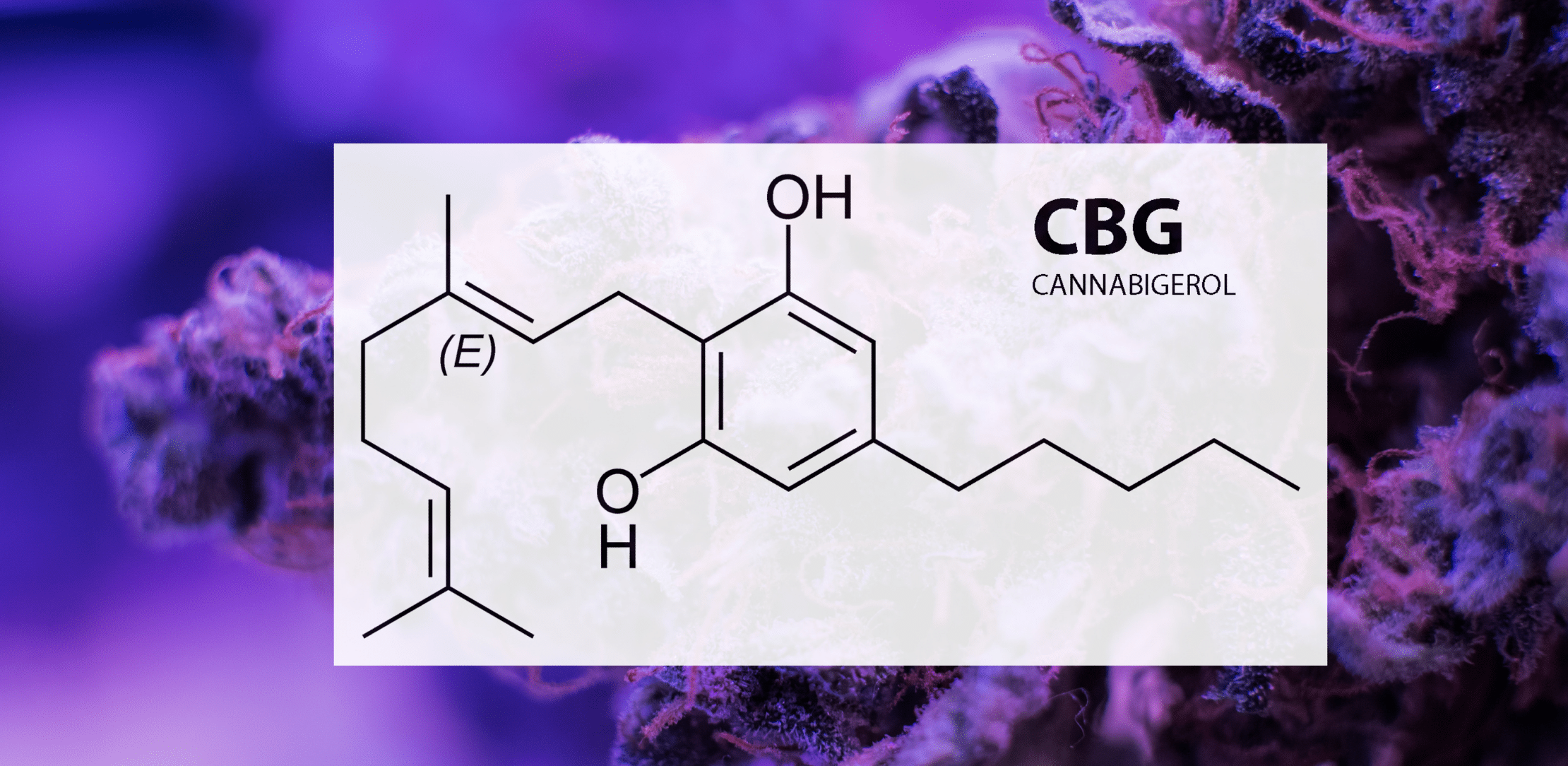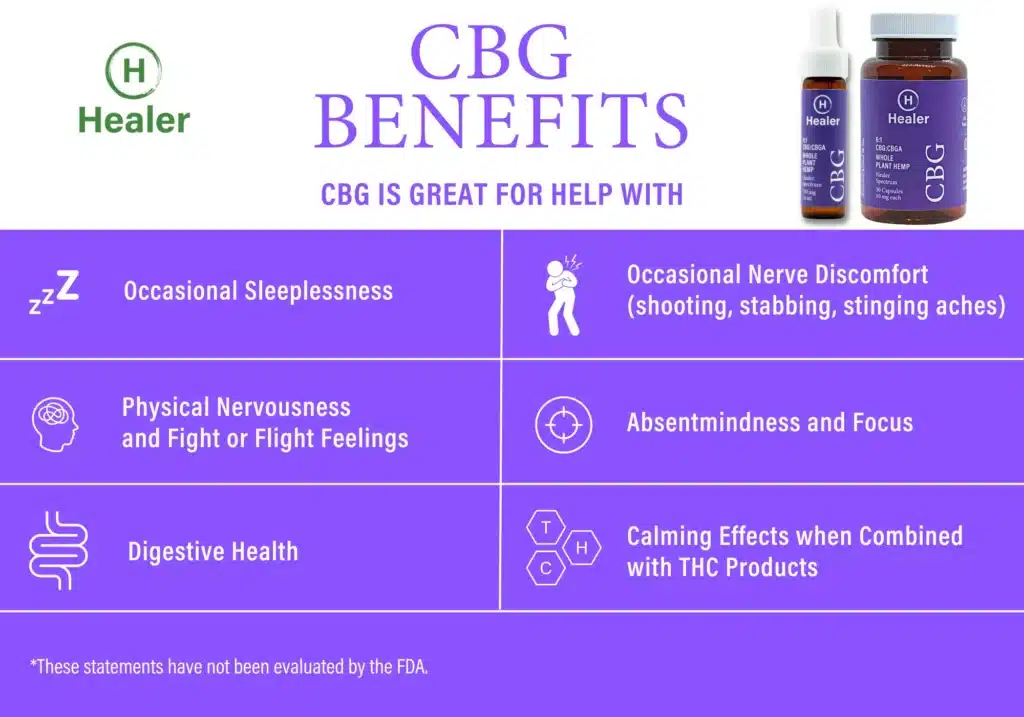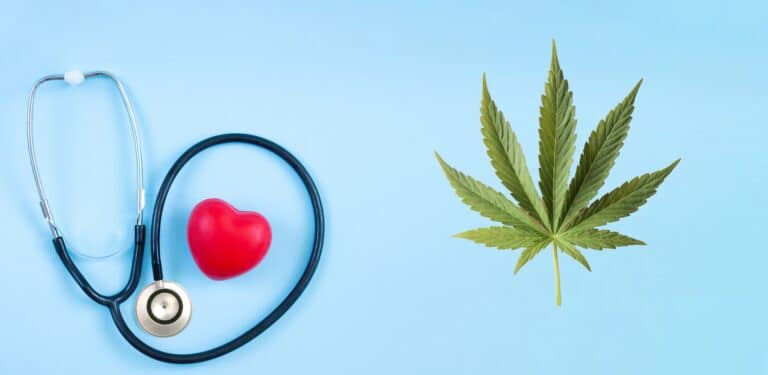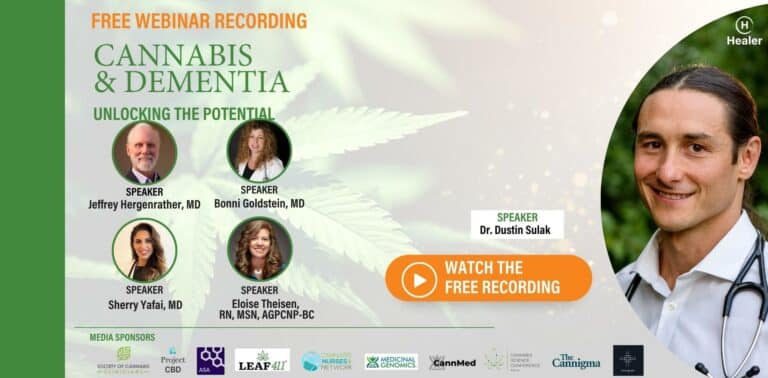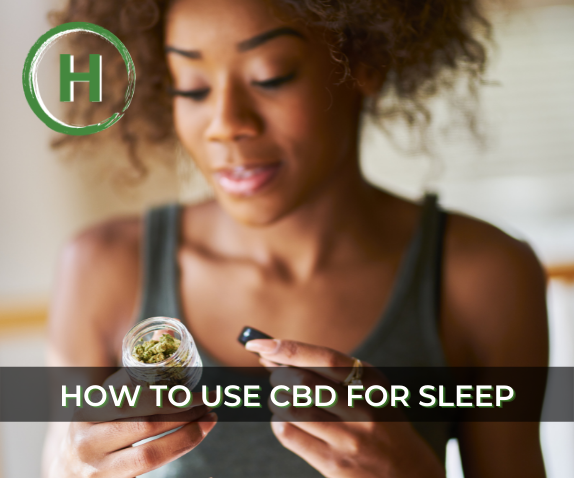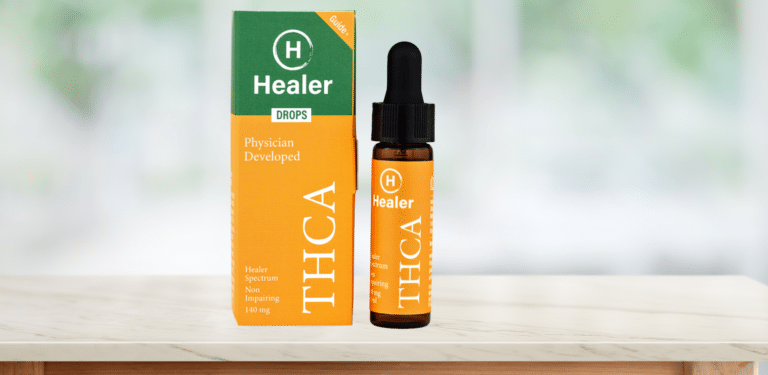Interested in learning about what CBG is as well as its potential benefits and effects? The most well-known cannabinoids are tetrahydrocannabinol (THC) and cannabidiol (CBD), but there’s growing interest in the potential benefits of CBG, which has only recently become available in significant potencies.
What is CBG?
Cannabigerol (CBG) is one of the 100+ cannabinoids found in cannabis and hemp plants. Like the other cannabinoids, CBG has the potential to help with a wide range of health concerns, including:
- Trouble sleeping
- Nerve pain with shooting and stinging discomfort
- Physical anxiety and fight or flight feelings
- Attention deficit and hyperactivity
- Inflammation
- GI health
While a quick internet search reveals a plethora of information, it’s important to keep in mind that much you read about CBG is based on cell and animal studies with unknown implications for human use. After a thorough review of the literature, here’s what I think you need to know to be a smart cannabinoid consumer and decide if a trial of CBG is right for you.
CBG Benefits Chart
How is CBG Different from Other Cannabinoids?
Some have referred to CBG as the ‘mother of cannabinoids’. This is because its raw & unheated form, known as cannabigerolic acid (CBGA), is the precursor cannabinoid that is later converted into THCA, CBDA, or CBCA.
Like the other cannabinoids, CBGA is decarboxylated into CBG by heat and time, but few cannabis varieties have any significant amount of CBGA in the mature flowers. In the past, some growers used early harvesting techniques to increase the yield of CBGA from common medical varieties.
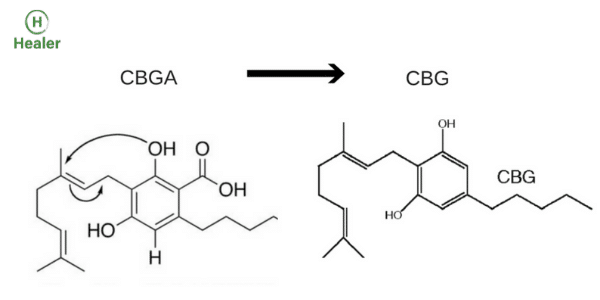
More recently, breeders have developed varieties of cannabis that lack the enzymes responsible for converting CBGA into the other cannabinoids, resulting in fully mature flowers dominant in CBGA and low in THC and other cannabinoids. These flowers can be extracted to produce products with high levels of CBG that offer distinct medicinal benefits.
Who should try CBG?
- People who want a hemp product to promote relaxation and sleep
- People who have not experienced satisfactory pain relief using CBD and/or CBDA
- People who find CBD and/or CBDA too mentally stimulating
- People who experience nausea or other gastrointestinal side effects from CBD and/or CBDA
- People who want to enhance the benefits of THC
- People with health conditions for which early research into CBG is showing favorable results, with support and direction from their healthcare providers.
Comparing CBG to other cannabinoids
CBG shares some overlapping features with THC, CBD, and CBDA. Like CBD and CBDA, CBG is non-impairing and can help relieve both physical and mental symptoms. Several of CBG’s ways of interacting with the body, however, are very distinct from CBD and CBDA [1].
These properties might make CBG especially useful for those who have not been satisfied with the effects of CBD or CBDA:
- While CBD and CBDA stimulate the 5-HT1A serotonin receptor, their likely mechanism of reducing anxiety and improving stress response, CBG appears to have the opposite effect on these receptors. This means that while all three compounds can decrease anxiety, some people are likely to respond better to CBD/CBDA and others to CBG, depending on one’s unique neurochemistry.
- CBG inhibits the activity of the sympathetic (fight or flight) nervous system by directly stimulating the ɑ-2 adrenoceptor in the central nervous system, a mechanism of action common to drugs that treat anxiety, ADD/ADHD, and hypertension.
- CBG also inhibits the uptake of the relaxing neurotransmitter GABA, another important mechanism involved in regulating anxiety, sleep, and pain signaling.
- CBG has demonstrated more potent antibacterial properties than other cannabinoids in preclinical models. As research grows we’ll learn more about the therapeutic potential of CBG in infectious conditions.
- Unlike THC and CBD, CBG has not been shown to reduce nausea.
Are there any similarities between CBG, CBD, and THC?
CBG is similar to CBD in that it is non-psychoactive, but that’s not the only similarity to discuss. CBG has some similarities with both THC and CBD.
For example, CBG has potential to improve metabolism and reduce inflammation because, similar to CBD and THC, it stimulates the PPAR𝛾 nuclear receptor, a target that controls the expression of genes which control metabolism and inflammation. Though several cannabinoids are active at the PPAR𝛾 nuclear receptor, CBG is more potent than THC or CBD.
CBD and CBG are very comparable in their activity at six ion channels (TRPA1, TRPV1, TRPV2. TRPV3, TRPV4, and TRPM8) which likely account for some of their similarities in treating pain, inflammation, and other conditions. These ion channels are responsible for some sensations with which many people are familiar – for example, TRPV1 is the target of capsaicin, the active constituent of chili pepper, and TRPM8 is the target of menthol. Beyond creating a unique sensation, both capsaicin and menthol have been shown to reduce pain and inflammation and are commonly used for these purposes. It is likely that these ion channels also account for some of the therapeutic activity of both CBD and CBG.
Further Exploring CBG’s Benefits
CBG has also been shown to relieve pain, to reduce redness associated with inflammation, and to inhibit lipoxygenases, enzymes that produce inflammatory molecules; THC also shares these same properties, but CBG has been shown to be more potent [2].
While human research on CBG is limited, preclinical studies show promise in improving inflammatory bowel disease, other inflammatory conditions, glaucoma, mood disorders, and nerve pain. As mentioned above, CBG has been shown to be an impressive broad-spectrum antibiotic with an ability to fight antibiotic-resistant superbugs like MRSA.
Understanding CBG and Pain
In one rodent study of peripheral inflammatory pain, CBG was shown to be much more potent than THC and aspirin [3]. CBG was effective at 1.26 mg/kg; aspirin reduced pain at 15 mg/kg, and THC worked at 25 mg/kg. While THC’s maximal pain reduction was better (THC had the potential for stronger relief at much higher doses), this data suggests CBG could be a cost-effective agent for pain, effective at low doses without the impairment possibility related to THC.
CBG and Inflammatory Bowel Disease
One mouse model of ulcerative colitis found that CBG was protective and curative based on the overall reduction of the ratio between colon weight to length, a measure of disease severity [4]. This model of colitis is known to increase several inflammatory cytokines and decrease anti-inflammatory IL-10 levels, and CBG was shown to restore these to normal levels in the study. Through another method of action, CBG provided antioxidant protection of the cells in the intestines. Based on these early findings, there could be a lot of promise for CBG helping with inflammatory bowel disease.
CBG and Glaucoma
Repetitive administration of CBG, and to a lesser extent, single doses reduced eye pressure in cats. The intraocular pressure (IOP) of CBG-treated eyes was 4-8 mmHg lower than the untreated eye on the other side. That’s a significant reduction that could be important in the treatment for glaucoma. Also, CBG was shown not to be toxic to the eye or optic nerve [5]. This is especially important for patients with glaucoma who want to use a hemp product, because CBD has the potential to raise IOP, something that should be avoided – for those with this condition, CBG, THC, and CBDA are better choices than CBD.
Benefits of CBG vs. CBD
Compared to CBD, early indicators suggest CBG is:
- More calming and relaxing
- Effective for aches and discomfort not addressed by CBD
- More potent at lower doses
- Unlikely to diminish the effects of THC
Is it good to mix CBG with CBD and CBDA?:
- Some evidence suggests that large amounts of CBG may inhibit some of the benefits of CBD and CBDA, via their opposite effects on the serotonin system. I have not yet observed this clinically, but it is possible for some people that adding high doses of CBG to an effective CBD/CBDA regimen might decrease some of the benefits of CBD/CBDA.
- Conversely, CBDA is not likely to inhibit the effects of CBG, and even small amounts of CBDA may enhance the benefits of CBG.
- One preclinical model showed that small amounts of CBG can enhance the absorption of CBDA by up to 14-fold [7]. This means that CBDA products that contain even very small amounts of CBG are likely to be much more effective.
CBG Dosage Guide – How to Use CBG Effectively
The key to getting the best outcomes with CBG is to use the right dosage that’s suited to your specific needs. Specifically, this means that to get the most out of CBG, you’ll need to figure out what your specific ideal dose is and how often you should take it.
I recommend starting with CBG drops administered sublingually (beneath the tongue). Some of the medicine will be absorbed quickly into your circulation through the network of capillaries in your mouth, providing rapid relief, while the remainder will be digested and provide a delayed impact.
Furthermore, consuming CBG in this manner allows you the fine tuning required to determine your unique ideal usage amount. This is especially true with Healer brand drops which are formulated to contain about 1 mg of cannabinoids per drop. As a result, drops are far and away the most cost-effective option.
Taking CBG drops such as Healer’s 6:1 CBG:CBGA with food containing some healthy fat will increase absorption, which can increase the treatment’s effectiveness while lowering its cost.
I recommend most people start with 5mg twice daily and gradually work up to 40mg per dose if needed. Most people report noticing the effects quickly (even after a single dose) and also describe increasing benefits over the first 30 days of consistent use. CBG has a mild, pleasant flavor, quite different from the peppery taste of CBDA.
If you’re currently using CBD or CBDA formulas to address health conditions, but want to test how CBG compares, I recommend trying CBG products at least 4 hours apart from your CBD or CBDA dosages, to learn how you respond to CBG. After establishing how you respond to CBG on its own, I encourage you to use CBG, CBD, and CBDA in the regimen that works best for you.
Check Out Our CBG Webinar
Dr. Dustin Sulak and Bonni Goldstein MD present the current research on CBG and answer live questions on various topics. This is a recording of the live webinar that took place on November 17, 2021.
Research Topics:
- CBG – a review of mechanisms of action
- CBG in a mouse model of PTSD
- CBGA in a mouse model of epilepsy
- CBG and brain cancer cells
- CBG and breast cancer cells
- Anti-inflammatory effects of CBG and CBD, alone and in combination
- CBG and CBD in Parkinson’s and Lewy Body Dementia – a case series
- Q&A
If you enjoyed this recording and are interested in watching more, enroll in the Healer Certified Training program for access to 35+ recordings with time codes and research abstracts. Learn more and enroll
By Dustin Sulak, DO
Sources
[1] Reviewed in Nachnani, Rahul, Wesley M. Raup-Konsavage, and Kent E. Vrana. “The Pharmacological Case for Cannabigerol.” Journal of Pharmacology and Experimental Therapeutics 376.2 (2021): 204-212.
[2] Evans, F.J. 1991. “Cannabinoids: the separation of central from peripheral effects on a structural basis.” Planta Med 57(Suppl 1):S60-7
[3] Formukong, E. A., A. T. Evans, and F. J. Evans. “Analgesic and antiinflammatory activity of constituents of Cannabis sativa L.” Inflammation 12.4 (1988): 361-371.
[4] Borrelli, Francesca, et al. “Beneficial effect of the non-psychotropic plant cannabinoid cannabigerol on experimental inflammatory bowel disease.” Biochemical pharmacology 85.9 (2013): 1306-1316.
[5] Colasanti, Brenda K., Charles R. Craig, and R. David Allara. “Intraocular pressure, ocular toxicity and neurotoxicity after administration of cannabinol or cannabigerol.” Experimental eye research 39.3 (1984): 251-259.
[6] Baram, Liran, et al. “The heterogeneity and complexity of Cannabis extracts as antitumor agents.” Oncotarget 10.41 (2019): 4091.
[7] Anderson, Lyndsey L., et al. “Cannabis constituents interact at the drug efflux pump BCRP to markedly increase plasma cannabidiolic acid concentrations.” Scientific reports 11.1 (2021): 1-14.
© 2024 Healer. All rights reserved.
Site by CannaPlanners
